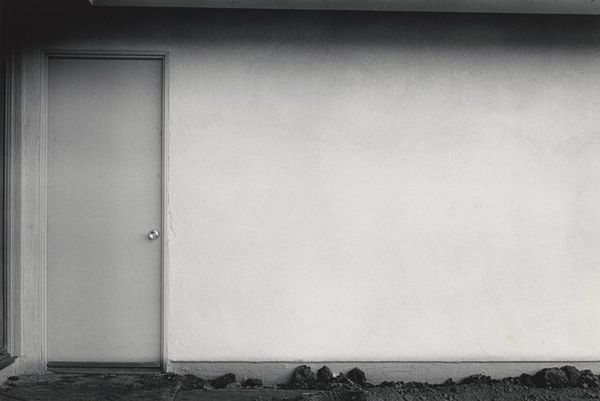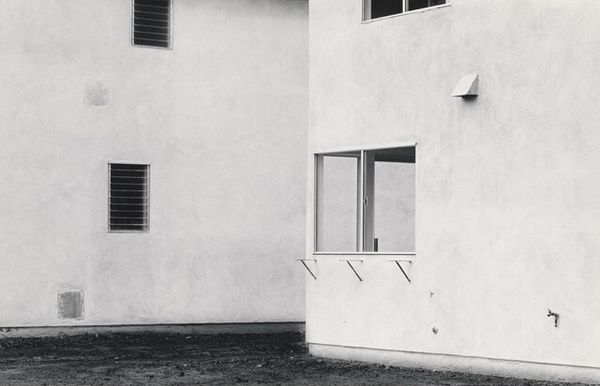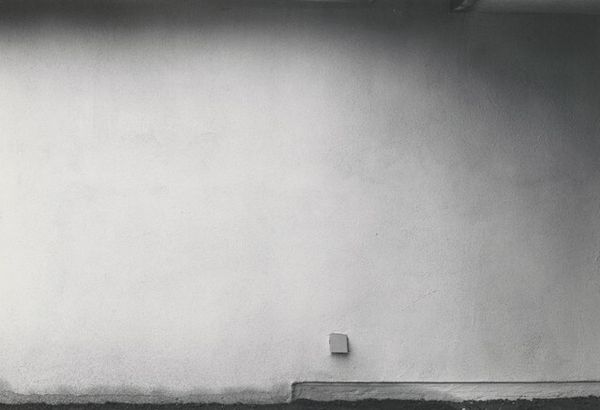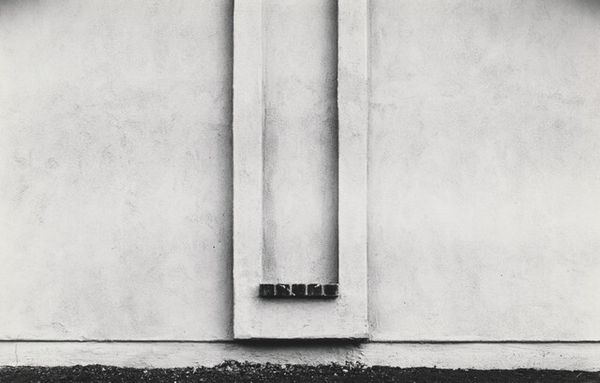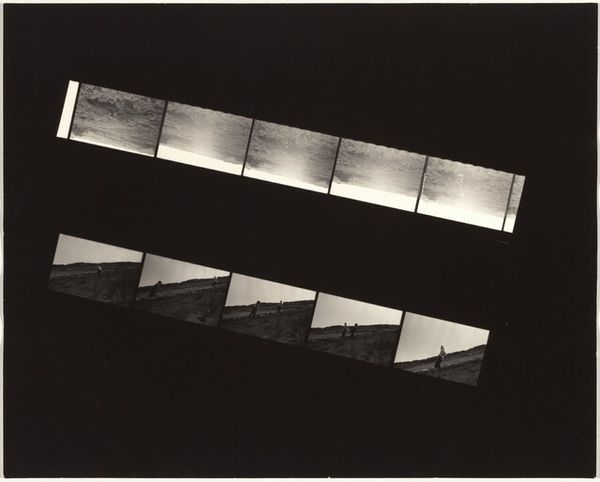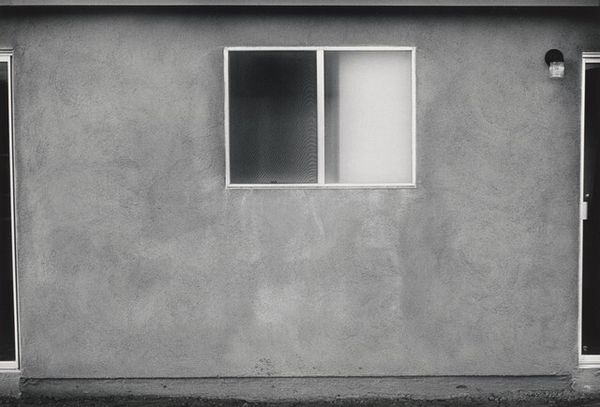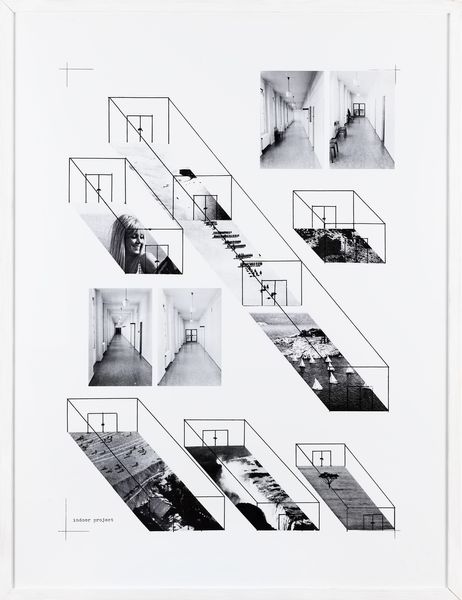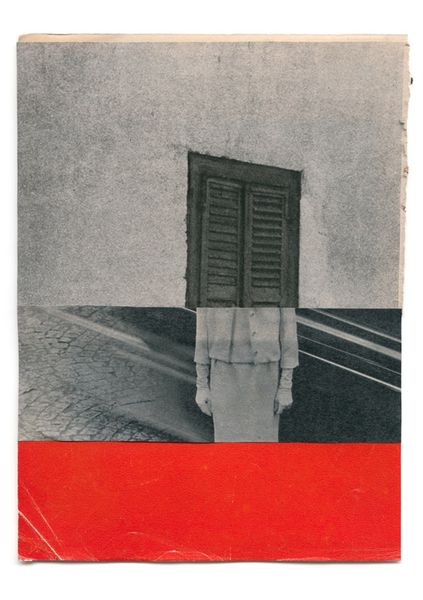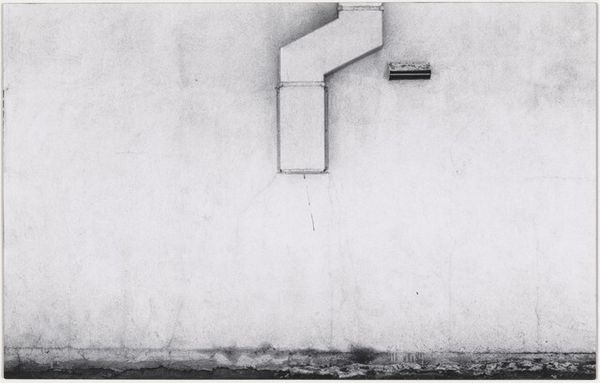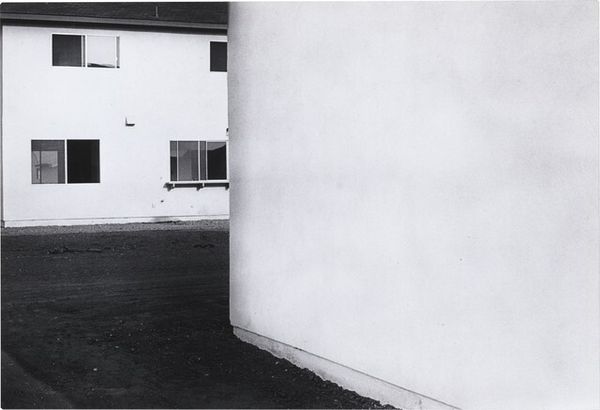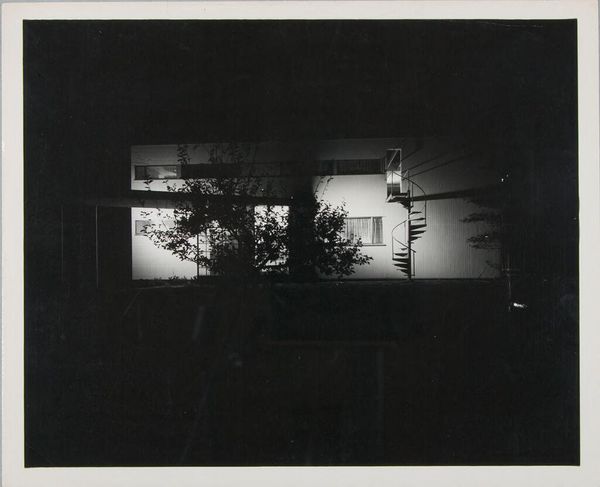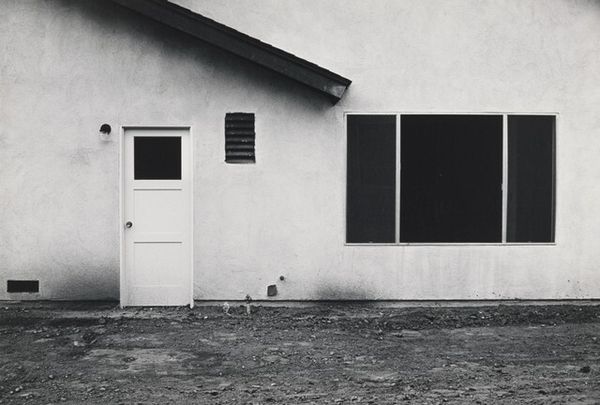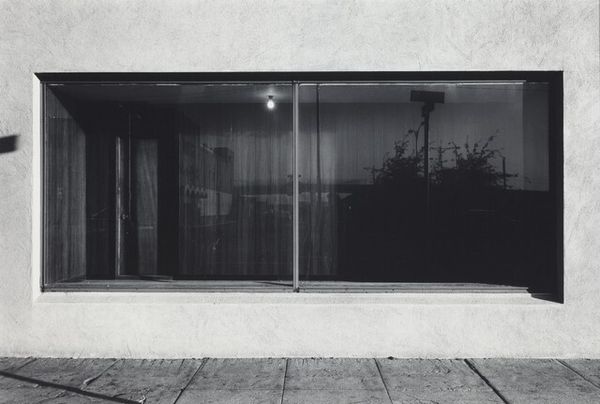
Dimensions: image: 220 x 128 mm
Copyright: CC-BY-NC-ND 4.0 DEED, Photo: Tate
Editor: Here we have Werner Mantz’s photograph, "Detail Kalkerfeld Settlement, Cologne 1928." The stark geometry feels so…intentional. What do you see in this piece? Curator: I see a critical commentary on the social engineering of the era. The repetitive architecture, emphasized by the shadows, mirrors the drive for social control and standardization prevalent in post-WWI Europe. How does this image make you feel in relation to ideas of home and belonging? Editor: I hadn’t considered that. It’s unsettling, almost. The lack of individual expression is a bit dehumanizing. Curator: Exactly. Mantz captured the tension between the utopian ideals of functionalist architecture and the potential for social alienation it contained. It makes one consider who benefits from such design. Editor: So, it's not just a photograph of a building, but a statement on society itself? Curator: Precisely. Mantz prompts us to question the social implications of even the most seemingly benign design choices. That's what makes it so powerful. Editor: I see that now! Thanks for sharing this deeper meaning.
Comments
tate 8 months ago
⋮
http://www.tate.org.uk/art/artworks/mantz-detail-kalkerfeld-settlement-cologne-1928-p79945
Join the conversation
Join millions of artists and users on Artera today and experience the ultimate creative platform.
tate 8 months ago
⋮
Detail Kalkerfeld Settlement, Cologne 1928, printed 1977 is a frontal depiction of the facade of a building, with two vertical lines of windows and a door. The shadows of nearby edifices fall diagonally onto the right side of the facade, contrasting with the horizontal and vertical lines of the windows. The windows on the left are wide, low rectangles, while those on the right are more square, and the two different types are alternately spaced down the facade, creating a rhythm in the composition. The door, which is almost entirely in shadow, appears as entirely black, adding to the range of tones within the photograph that are produced by the interplay of light and shade. With the edges of the building cropped and the architectural elements appearing as if on a white background, the image tends towards abstraction.

